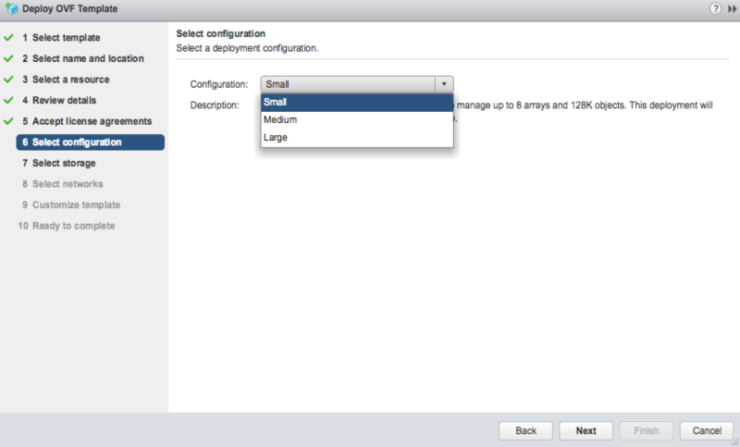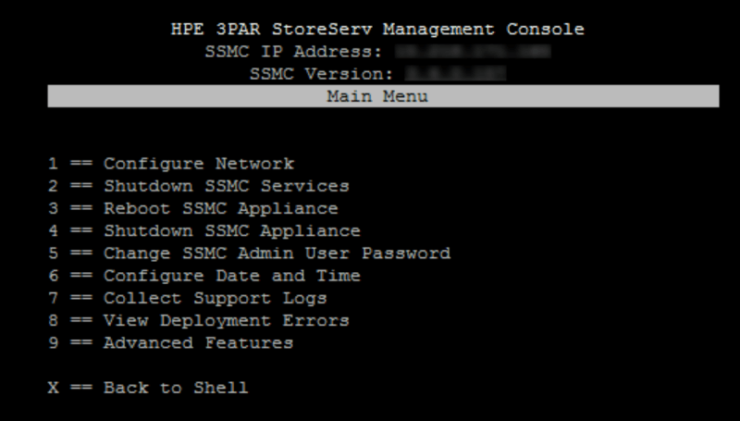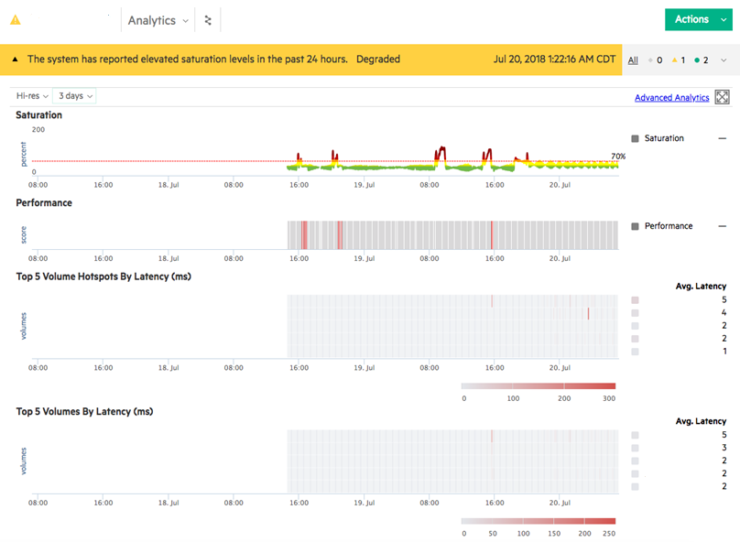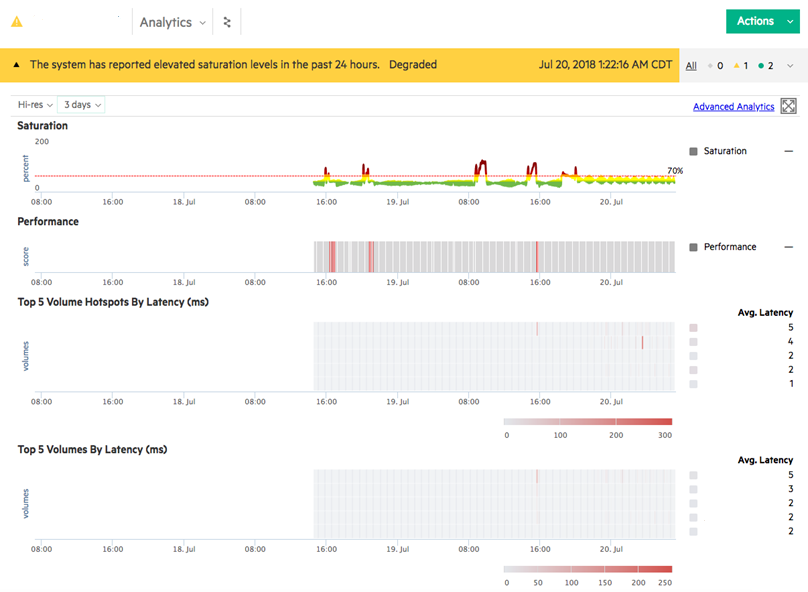HPE have just released SSMC 3.4, it looks like a small update, but it brings a big change and many new features. Therefore, I would say the right Version should be 4.0.
This guest post is brought to you by Armin Kerl, if you fancy trying you hand at blogging check out our guest posting opportunities.
What’s New in SSMC 3.4?
The key new features in SSMC are:
- Appliance Deployment – Now a Linux based appliance VM
- New Setup Sizing Guidelines – Small, large or medium deployments available depending on the number of 3PAR systems you are managing
- InfoSight Integration – Tighter integration with InfoSight
- Performance Analytics – Includes simplified reporting indicating if system is overstretched or performing well
- Replication – Enhancements to management
Let us get a deeper look at the new features:
Download SSMC
To get the latest 3.4 version of SSMC you can download it from the HPE Software Depot. Once downloaded you will find an ISO with the name format HPESSMC-.iso. When you mount the ISO you will find the appliance image file in there HPE_SSMC__VMware_Image plus the migration tool (HPE_SSMC__Migration_Tool) which will allow you to migrate your current settings to the new appliance.
SSMC Appliance
In the Past, we installed the SSMC as a service on an existing Windows or Linux Host, now it is a standalone Linux based appliance. Today supported operating systems to run the appliance on are VMware ESXi version 6.0, 6.5, 6.7 or Microsoft Hyper-V Server 2012 or 2016. The 3PAR OS can be 3.2.1, 3.2.2 or 3.3.1.
SSMC Deployment
During the Deployment you can choose the initial settings like IP address and you can choose between three Sizing Options:

Small
Use the Small deployment option to manage up to 8 arrays and 128K objects. This deployment needs 4 vCPUs, 16GB memory and min 500GB Disk Space.
Medium
With the Medium deployment option, you can manage up to 16 arrays and 256K objects. This deployment needs 8 vCPUs and 32GB memory and min 500GB Disk Space.
Large
The large deployment option allows management of up to 32 arrays and 500K objects. This deployment needs 16 vCPUs and 32GB memory and min 500GB Disk Space.
SSMC Migration
If you are already running SSMC 3.2 or 3.3, you can use the migration tool contained in the SSMC ISO, install it on the same host where the older SSMC is installed and migrate the configuration to the new appliance.
The Text-based User Interface (TUI)
Once the SSMC appliance has been deployed using the initial setup wizard you make any further configuration changes through the The Text-based User Interface (TUI). To access the TUI you will open the console of the SSMC appliance and logon with the username ssmcadmin. You can find the password for the ssmcadmin account on page 55 of the Admin Guide.

InfoSight Integration
If configured, The SSMC is now able to pull information from HPE InfoSight back into the SSMC Console.This brings you advanced system performance and reporting analytics into The SSMC. You have to enable it in SSMC “Global Settings > Application” and enable InfoSight, as described in a previously in Configuring 3PAR with InfoSight.

Performance Analytics
In the past, we were able to get a lot of Performance Information from 3PAR Storage – how many IOPS, MB/s, latency, for disks, volumes, groups, HBA etc. but you needed specialist skills to interpret the values. A common question was are these performance values good or bad.
Now InfoSight and SSMC calculate saturation levels and headroom availability with respect to throughput and shows it on easy to interpret graphs. This can be done in Real-time, because analytics from InfoSight are now built inside SSMC. New Statistical models detect hotspots, saturation and a lot more. Thanks to the connection with InfoSight, it is also showing “How is my 3PAR performing against other similar Systems in the whole World”.
To see this, add the new Panels to your Dashboard or use the new Dropdown Menu “Analytics” on the System Page.

There is also a new “Advanced Analytics” category in the System Reporter.

Initially all the analytics features will only work with all-flash (SSD only) arrays.
Replication
There are also some enhancement for Synchronous Data & File Persona Replication Configuration and management.
SSMC Documentation
The following new manuals are available for SSMC 3.4





